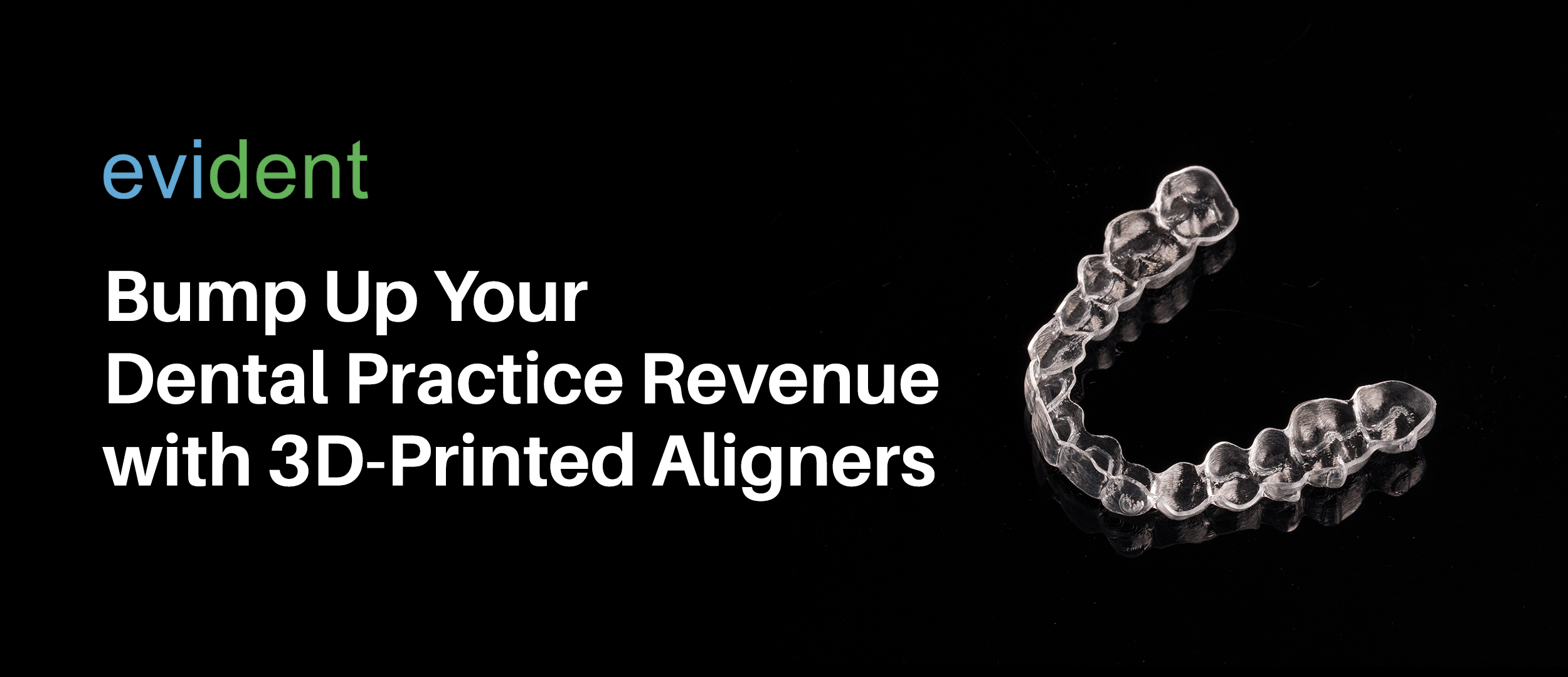
When technology and design work hand in hand, orthodontists can expect to see a bump in their dental practice revenue and an overall better experience for their customers.
Owners and practitioners have to understand that this tech and design synergy is essential if one wants to stay relevant. Case in point—clinics that offer 3D-printed aligners have benefitted immensely from this digitalization.
Unfortunately, not all clinics have the capability to host production of cases or are familiar with this technology. And so, outsourcing the planning and design remains a fairly common practice.
With aligners however, there may be profitable reasons to consider in-house printing or even upping production and tapping the help of dental labs. If you’re one to wonder how an orthodontist’s income can benefit through aligners, here are several reasons to consider.
Aligners versus Conventional Braces
What do you do when your dental practice revenue needs a tune-up? Why should you consider growing your current aligner production? A study by the National Library of Medicine, the world’s largest biomedical library, indicates that time is indeed money when it comes to aligners’ profitability.
Simply put, the less time spent by patients in your clinic, the more time you can spend on other clients. These modern-day aligners offer not only faster production and delivery, but also shorter treatment duration. This in turn means less number of visits for the patient too.
In addition, the cost of fabrication per chair time for conventional braces is far more expensive than aligners. With the rise of 3D printing, dental clinics can now afford to streamline their workflows.
Why Use In-house and 3D-printed Aligners?
What was once a week-long effort of production and delivery has now been trimmed down to days and sometimes even hours, allowing dentists and owners to spend their time in ways where they can provide greater impact.
It’s no secret that advancement in technology has allowed dental labs, particularly those with digital capabilities to flourish. Through scanning and 3D models, we are now able to transform the design process and make it easier for potential customers to visualize the process.
Dr. Rick Ferguson, a dental industry expert who has decades of experience in the field and is also a prolific lecturer globally for dental practices summarizes the benefits best: Cost savings, convenience, control, and competition.
-
Cost Savings
3D printing allows for a more efficient and profitable dental service since you practically cut costs up to more than half the original price.
Let’s take the average price of aligners from bigger companies as an example. It could range from around 80 to 115 USD. In-house fabrication will only cost around 22 USD and around 50 USD when you outsource the planning.
What’s more is that 3D printing doesn’t require a specialist to operate. This significantly reduces the amount of labor needed while still getting the most returns.
-
Convenience
In-house aligners and 3D-printed aligners are an efficient way of simplifying workflows. With a printer at your disposal, you can start cases within the same day or the next. Splints and surgical guides need not be sent to a lab.
With such systems in place, production is bound to be quicker and patients need fewer visits just to get their aligners or other treatments done.
-
Control
The models used can be kept in house so if a patient loses or damages an aligner, revisions can easily be done in a day. You gain better control with your treatment plans too. Most labs get most value still by outsourcing treatment plans and that’s one thing you might want to consider as well.
-
Competition
A dental lab’s capability to tailor-fit products based on a specific customer is essential in the industry. Dentists can’t really compete with the price points of aligners from bigger companies. With a printer and in-house aligners though, it’s a different story.
Fabrication cost per aligner can reach only around 7 USD with about 40 USD for software cost per case. This gives a boost to an orthodontist’s income when they are able to market it alongside their existing services.
Print In-House, Scale Up the Output
More time and money saved means more output produced for your clinic. Ultimately, by being able to print in-house, you’re allowing your clinic to scale up and offer a more diverse set of services which may not be offered by competitors in your location.
It’s highly likely that most of them are outsourcing from the same labs too. But this is not to say that printing in-house is the best option for everyone since there are other factors to consider like manpower and expertise.
Outsource to Labs or Stick to Chair Side Printing?
One question to consider is whether or not clinics should outsource to labs or stick to chair side printing. There is no clear answer of course. While the greater need for customization is apparent, the services you adopt should be relevant to your clinic’s processes.
Delegating the design and printing to dentals labs should be considered when your in-house team cannot accommodate the workload or if your clinic doesn’t have the technical expertise to produce the models you need.
Again, what matters most is that you understand what tasks in your workflow can you delegate so you and your team can focus on the actual production of cases.
Tailor-Fit Solutions Specific to Your Needs
Outsourcing tasks under a specific workflow can be difficult if your partner dental lab isn’t flexible enough to customize according to your clinic’s needs. It’s a good thing though that a number of digital labs work around a customer’s processes rather than change the workflow all together.
If that’s the case, Evident is a good place to start. What the design center excels at particularly is that it’s home to a team of designers who are able to custom-fit according to your needs. Think of it as an extension of your clinic. They dial in specifically to a customer’s preference in order to produce what a good case looks like to them.
It’s not only a good way to increase your dental practice revenue, but also a good way to assess what your clinic workflow needs, especially in an industry that demands more tech and tools synergy.
If you have questions about dental designs, lab software, and equipment or are interested to talk more about a potential partnership, Evident’s lines are always open. You may get in touch through Evident’s Contact Us page.








